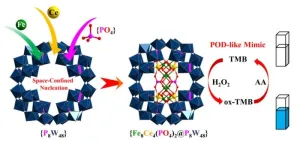These findings came from a computer simulation model of all the 6-17 year olds in the United States developed and run by the Public Health Informatics, Computational, and Operations Research (PHICOR) team at the City University of New York Graduate School of Public Health and Health Policy (CUNY SPH) along with researchers from the National Heart, Lung and Blood Institute (NHLBI), Adelphi University, and the Centre for Sport Leadership at Stellenbosch University. The model simulated the daily physical activities of each youth, their growth, the impact of the physical activity on their health, the different chronic medical conditions that could emerge, and the resulting costs over time. Simulation experiments showed what could happen if youth were to maintain their current physical activity level, where the aforementioned disparities exist and then what would happen if such disparities were reduced by varying degrees. This included the impact on subsequent health outcomes, the medical treatments and procedures needed, and productivity losses from different perspectives.
Results from the model show that the cost savings from eliminating the physical activity disparities vary across age, sex and socioeconomic groups. For example, eliminating physical activity disparities saves over $847 million in direct costs and productivity losses for females aged 11-13 years from lower income households, but saves only a little over $41 million for females aged 14-17 years from middle income households. This suggests when limited resources are available, it may be most beneficial to tailor physical activity interventions towards lower income groups.
"Our work is one of the first studies to show the economic benefits of reducing socioeconomic disparities in physical activity levels among kids in the United States,” says Tiffany Powell-Wiley MD, MPH, a Stadtman Investigator and Chief of the Social Determinants of Obesity and Cardiovascular Risk Laboratory at the National Heart, Lung, and Blood Institute (NHLBI) and first author of the study. “It shows how investing in programs to get kids from all backgrounds more physically active can reduce costs related to obesity and other chronic diseases, like heart disease, diabetes and cancer. Our work highlights that we can all benefit when we reduce health disparities and move towards greater health equity."
Eliminating such disparities could help address the ongoing obesity epidemic in the U.S. The prevalence of obesity and overweight could decrease by 0.83%. This could then prevent 101,000 weight-related disease cases, including stroke, coronary heart disease events, type 2 diabetes, or cancer. Eliminating these disparities in physical activity levels could end up saving 191,000 years of life across the youth cohort's lifetime.
Substantial savings could result even if disparities were not fully eliminated but instead were reduced by smaller amounts. For example, reducing such disparities by 25% could still result in around 86,000 fewer cases of obesity/overweight and 26,000 fewer cases of weight-related diseases over the youths' lifetime. This could save over $4 billion in societal costs, including over $1 billion in direct medical costs and over $2 billion in productivity losses. Reducing disparities by 50% and 75%, increases cost savings from direct medical costs and productivity losses to over $8 billion and almost $13 billion respectively.
The PHICOR team's previous work has shown the benefits of overall increases in physical activity among youth. For example, a study published in 2017 in Health Affairs showed that increasing physical activity among children 8-11 years old so that they are engaged in 25 minutes of high-calorie burning physical activity three times a week, could save well over $50 billion. A study published last month in the American Journal of Preventive Medicine showed that meeting the Healthy People 2030 goals for youth sports participation could save the U.S. around $80 billion.
"These previously published numbers showed what could happen if more youth were to achieve physical activity and sports participation guidelines," explained Marie Martinez, MSPH, a senior analyst with PHICOR and co-author of the study. "But if the focus of physical activity efforts is primarily on those of higher socioeconomic status, simply increasing overall numbers can end up leaving those with lower socioeconomic statuses behind. Our most recent study quantifies the value of achieving more equity in physical activity levels among youth.”
Many factors may be contributing to the lower physical activity levels seen among those of lower socioeconomic status living in poorer neighborhoods. Such neighborhoods often don't have high quality facilities or locations that support youth physical activity, such as parks, schoolyards, gyms, and recreation centers, and oftentimes lack quality school physical education programs as well. Additionally, parents oftentimes have high demands on their time, conflicting work schedules, and financial constraints that make it difficult to get their children physically active.
"The physical inactivity epidemic and the obesity epidemic that the U.S. is facing right now are due in large part to broken systems and such systems are even more broken for those making less money," explained Bruce Y. Lee, MD, MBA, professor of Health Policy Management at CUNY SPH, executive director of PHICOR, and senior author of the study. "Our study showed how improving the surroundings and conditions for those of lower socioeconomic status could end up benefiting everyone around the country."
This work was supported by the National Center for Advancing Translational Sciences of the National Institutes of Health via award number U54TR004279, the Agency for Healthcare Research and Quality (AHRQ) via grant 1R01HS028165-01, the National Institute of General Medical Sciences (NIGMS) as part of the Models of Infectious Disease Agent Study network under grants R01GM127512 and 3R01GM127512-01A1S1, the National Institute Of Allergy And Infectious Diseases (NIAID) of the National Institutes of Health (NIH) under Award Number P01AI172725 and by the National Science Foundation (NSF) via award number 2054858. Additionally, this project was supported by the National Institutes of Health (NIH) Intramural Research Program via grants ZIA HL006168, ZIA HL006225, ZIA HL006252, and ZIA MD000010. The Social Determinants of Obesity and Cardiovascular Risk Laboratory is funded by the Division of Intramural Research at the National Heart, Lung, and Blood Institute (NHLBI) and the Intramural Research Program of the National Institute on Minority Health and Health Disparities (NIMHD). The content is solely the responsibility of the authors and does not necessarily represent the official views of the funders, or imply endorsement by AHRQ, NIGMS, NIAID, NIH, NSF, NHLBI, NIMHD, or the US Department of Health and Human Services.
About CUNY SPH
The CUNY Graduate School of Public Health and Health Policy is committed to teaching, research, and service that creates a healthier New York City and helps promote equitable, efficient, and evidence-based solutions to pressing health problems facing cities around the world.
About PHICOR
Since 2007, PHICOR has been developing computational methods, models, and tools to help decision makers better understand and address complex systems in health and public health. Follow @PHICORTeam for updates.
About Adelphi: A modern metropolitan university with a personalized approach to higher learning
Adelphi University is dedicated to transforming students’ lives through small classes with world-class faculty, hands-on learning and innovative programs supporting academic and career success. Long Island’s oldest private coeducational university, Adelphi is consistently ranked as a Best College by U.S. News & World Report. More than 7,400 students are enrolled at our main campus in Garden City, New York—just 23 miles from New York City’s cultural and internship opportunities—and at dynamic learning hubs in Brooklyn, the Hudson Valley and Suffolk County, as well as online.
About Centre for Sport Leadership, Stellenbosch University
The Centre for Sport Leadership (CSL) is a unit within Maties Sport (sports directorate) at Stellenbosch University (South Africa), that was created in 2019. Its objectives are to conduct leadership development within a sporting context for student-athletes, coaches and general sport practitioners and administrators. The Centre also provides thought leadership on key issues within South African, African and Global sport, through impactful partnerships and by conducting and facilitating interdisciplinary research for impact.
# # #
END





